Galloping into the Old West
TOMBSTONE, AZ— There is something haunting about the Great American Southwest, always pulling me back. Landscapes raw and wild and otherworldly, a kind of mystical place where endless horizons reveal a naked, primeval earth unencumbered by civilization. There is a mirage reflected by the glimmering heat rising from desert floor and canyon, a new vista, one leading to the past.
A couple of weeks ago, I took that road.
The way to Tombstone, AZ can feel like a wagon trail that happens to be paved. Passing through small, dusty towns that aren’t much more than stage coach stops, a place to get some grub, put up your boots, feed your steel horse and get back on the trail. For those of us who watched too many westerns, this is the way of the west. Whether you’re pushing cattle, prospecting for precious metals, running from the law, endlessly searching for a homestead or riding to the next cold beer, we are always trying to get somewhere else. Just passing through, gone before the dust settles. The West is less a place and more a state of mind. It embodies wanderlust, adventure, independence. Not much more needed than our ride, big black boots, and shoulders covered in well-worn leather. It is freedom. And for three days and nights in the third weekend of October for the last 96 years, it is Helldorado Days.
Tombstone’s annual “Helldorado Days” parade.
Tombstone was founded by prospector Ed Schieffelin in 1877, sparking a silver boom that lasted though the 1880s. Schieffelin pickaxed what he could out of the surrounding Dragoon Mountains, got rich and left before mining killed him. Many others weren’t so lucky, or smart. It was common for miners to feel shackled to the mountain, afraid to leave with little to show for it, afraid to surrender their claim or give up what income they could dig out of the earth. Most regretted it.
No other town would be a more appropriate host. To those who make the pilgrimage to this southern Arizona town in Cochise County every year, Tombstone epitomizes the grit and spirit of the Old West, the wild frontier mining town that somehow hung on by its teeth long after the mines closed and there was no human reason to be there. Somehow, romanticized or not, mettle, courage, perseverance and pure dumb stubbornness made them stay, rebelling against the elements and good sense, driven by greed, desperation or simple survival. It was the American way.
When in Tombstone…
Gunfights & Bordellos
The small town of some 1,400 residents (and growing) welcomes thousands of the faithful to its annual big crazy thing every year without fail. They come resplendent in authentic Old West finery. Frock coats, bedazzled vests, dance hall fancy dresses, pioneer wear, Victorian proper or casual, it’s all 1880s style tip to toe, topped off by a wide brim or bowler hat, which was actually more common in the 1880s and ‘90s since it was lighter and didn’t blow off easily. Hips tote western holsters carrying reproduction revolvers that, usually, are not much more than very loud and pricey cap guns. Sometimes not. There isn’t much law in Arizona when it comes to weapons, at least for residents. The state did away with concealed weapon permits years ago, believing them to be too “restrictive.” Guns and long knives are standard accoutrements on Allen Street, Tombstone’s main drag.
A shootout reenactment on Allen Street in Tombstone during the Helldorado Days festivities.
Whether for the pure fun of it, to indulge in a little cosplay, or play out some Bonanza or Gunsmoke fantasy, like-minded wild west enthusiasts and kindred spirits gather to see simulated gunfights in the street, eat and drink in the saloons, take in the semi-historical or purely fictional shootout re-enactments, stay in old bordellos that are now, allegedly, B&Bs, and enjoy the big pomp of the closing day parade. Tombstone is virtually infested with ghosts so if the paranormal attracts you, take one of the town’s ghost tours. There may have also been a seance room tucked strangely away inside a sweet shop, but it was too spooky for me to get any closer. Curated mine tours, stage coach and trolly rides are also available, as are several small museums to wander through.
A major pastime is shopping, meandering in and out of the many mercantiles. Tombstone is home to likely the world’s largest collection of Old West style clothes, accessories, jewelry, trinkets and bric-a-brac, in widely varying degrees of authenticity, price and quality. If you like treasure hunting or need an old-fashioned frock coat, silk-like vest to go with it, or non-firing retro pistol to top off the look, this is the place. There are very few bargains, however, so bring a credit card, or two.
A tough bunch of gunslingers. Doc and the Earp brothers.
The Victorian Cowboy
If you think you might feel a little out of place walking around your hometown dressed like Wyatt Earp or Big Nose Kate or the fictional Miss Kitty, in Tombstone you’ll fit right in. Interestingly, just when I thought the TV and movie depictions of fancy cowboy and cowgirl costumes were exaggerated, local historians tell me people generally did dress like that, far more formal than expected. It was, after all, the Victorian age, when propriety ruled. Even Earp’s common law wife, Josephine, acutely conscious of Victorian social judgement, wanted history to remember her as a formal woman befitting the period, threatening lawsuits against anyone who would publish pictures or accounts that depicted her otherwise. This was fictional image building. And as much as TV taught us, cowboys didn’t typically carry sidearms. They were heavy, expensive, would slap against your leg when riding, and not very useful on the range. Rifles had a lot more accuracy and could be carried in a scabbard.
My steed for the week: 2025 Harley-Davidson Street Glide Ultra. A big, gorgeous beastie.
Desert Sailing on the Luxury Liner
For this ride into a bygone era, Harley-Davidson lent us its luxury liner, the 2025 Street Glide Ultra. It’s a colossal beastie, like riding a horse with a pack mule inside it. With its roomy hard bags and tour pak, I could carry everything I needed, and a lot of what I didn’t. Its 117 cubic inch (1917 cc) mill made enough horsepower and torque to shoot me back 145 years right into Wyatt Earp’s lap. Doc Holliday just sneered. (More on the Ultra in an upcoming review.)
I didn’t want to be anybody’s huckleberry, but it’s easy to get lost in the lore and romance of this living museum. Tombstone is a year-round tourist destination, although summer is not preferred. It’s a bit hot, and can get quite wet. Arizona’s monsoon season runs from about mid-June through mid-September. It can come down like a hurricane and often enough you’ll wonder how the hell is this place a desert.
Parked among the relics in Lowell, AZ. Such a cool town.
A common misperception is all of Arizona is one big burning desert. It is not. The state has multiple climate zones, generally based on elevation. At about 4540 feet above sea level, Tombstone has a mild, semi-arid climate. It’s still toasty in the summer but nothing like Phoenix or Tucson. Spring and fall are pretty ideal, which may be one reason Helldorado Days is held in later October. On this visit, daytime temps were in the high 70s to low 80s with low humidity; night temps dropped below 60. Pack accordingly. Bring layers and always take the rain gear, which can also be used as added insulation, if needed. If you’re riding at night, be advised there are deer and other creatures in the area that sometimes like to jaywalk.
They have the gall to do it during the day, too.
Although Helldorado Days is not billed as a motorcycle rally, maybe it should be. There were plenty of bikes of various makes and models rolling about town, except for Allen Street, which is closed to public traffic. It wouldn’t take much to spin off a bike event here. Most enthusiasts seemed to roll to the Four Deuces Saloon, the pro tem biker bar of the event. The saloon had ample outdoor seating, live music and a friendly vibe, and happened to be one of the few joints in town, perhaps the only joint, where you could park right out front and admire your bike while you enjoy your cool healthy beverages.
I came to love this moto monster (mostly). And the town of Lowell.
Riding up to Old Bisbee
Tombstone isn’t the only place to visit on a ride to Tombstone. About 25 miles east and up in elevation to 5538 feet, the old copper mining town of Bisbee, built into the slopes of the Mule Mountains, is well worth a visit. Founded in 1880 as a mining camp, today tourism drives its economy. There are plenty of boutiques, restaurants, bars and coffee shops, plus a few antique stores that sometimes hold a secreted treasure. I found an antique pocket knife with a pearl handle in a cluttered cabinet of bric-a-brac. I’m sure it had a great backstory. I just have to make one up. The town center, Old Bisbee, doesn’t look like it’s changed much, except cement has replaced wood for sidewalks and the streets are paved.
The town appears to be made of mainly brick, which adds to its charm. Sadly, brick is seldom or sparingly used in new construction these days so riding into Bisbee feels like you’ve just turned a corner into another time. Most surviving Arizona cities began as mining or ranching camps. Boom towns that went bust if the local industry floundered. They were muddy tent towns that usually burned down at some point. If the mining or ranching was still profitable, they were rebuilt using wood, which usually burned down. Lastly, the third little pig move was to use brick as a raised fist to fire. It also signaled that this place made enough money to keep resurrecting. Billions of dollars worth of copper, as well a good amount of gold, silver, lead and zinc were ripped out of the Copper Queen and Lavender Pit mines. After nearly 100 years, the mines spent out, but remain tourist attractions.
Nostalgia runs thick out here.
Old Bisbee isn’t all there is to Bisbee. It is a collection of small communities, including Lowell, a couple of miles from the town center. It’s not hard to miss the turnoff, but once you find the damn place you can ride straight into the Twilight Zone. Basically one long horseshoe shaped block, Lowell is a surreal collection of ’40s and ’50s motorcycles, vintage cars, the odd couple of trucks, a closed gas station, what may be a working motorcycle shop, one retro diner reportedly offering the best breakfast in Cochise County, and one curious motorcycle museum that wasn’t a museum. Sitting right off the sidewalk, I opened the door and asked them if they were still open. They weren’t. It was a private home, one that happened to have museum quality engines and bikes and assorted rare parts for furniture.
Felt like home to me, but I remained uninvited.
It’s a town made of brick and memories, bikes and rusting steel and kids’ dreams. To me, it was Heaven’s Garage. Harleys and Indians sit in store windows, the kind where your grandma used to shop for shoes, storefronts long displaced by soulless big box stores and meaningless online shopping. The bikes look ready to ride, begging to break free of their glass partitions. Lowell is a tiny but precious remnant of Americana, a warm welcome to a sorely missed era, a time when art deco met the rocket age before plastic and pre-fab drowned everything. It was a time of innovation and bold style, a time when you didn’t need a tutorial to learn how to operate your car, when true motorcycling required wit, endurance and a sense of direction, and bikes rumbled with the sweet aroma of oil and gasoline.
Maybe I’ll run for mayor.
Brick and memories, bikes and dreams.
The sun was setting, temperatures dropping, it was past time to point the big Ultra back toward Tombstone, which was home for the next few nights. Truth is, I’ve thought about staking a claim here, more of a sometime camp, just because I think bikers are just reincarnations of 1880s cowboys and cowgirls. We wear the same kind of big black boots, leather vests, chaps, rugged pants, maybe a spur or two on a fun day. Kind of feels like an ancestral home. With a like-minded delusional buddy, we put in a bid on a foreclosure right in town, but didn’t get it. Maybe another time, or another life. For now, it was time to unstrap my imaginary gun belt, hang up the western hat I wasn’t wearing, put up my make-believe spurs and put a real cowboy meal in my belly. The trail goes on forever but tonight I became just another dusty, tired son of the town too tough to die.
Joshua
*Next: Dining in Tombstone


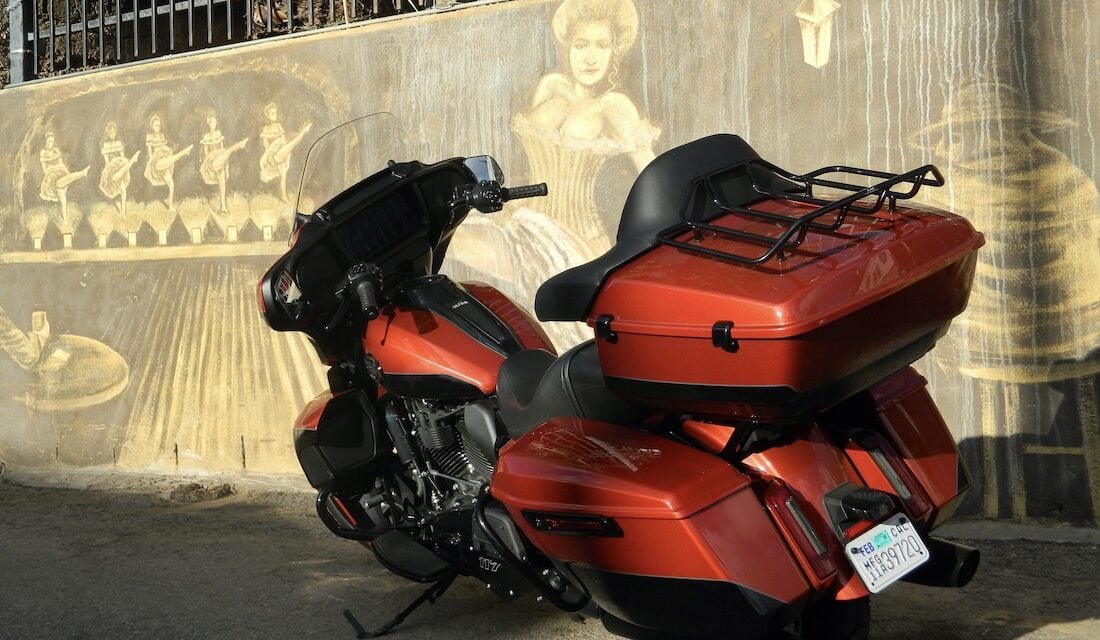
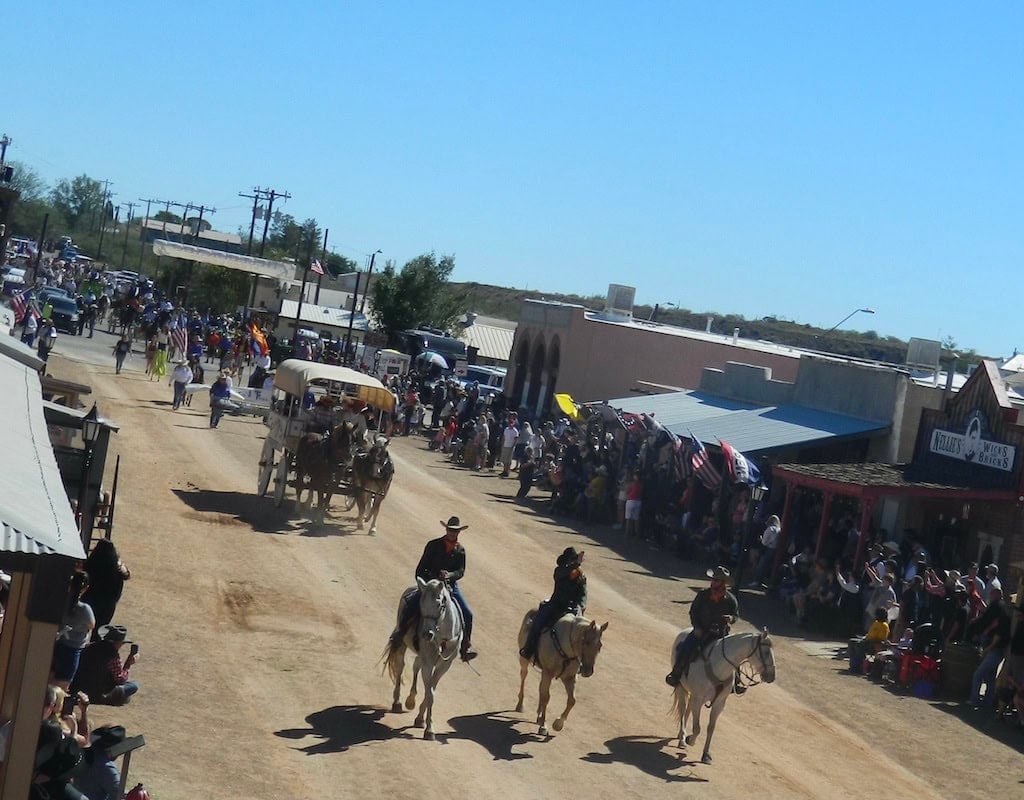
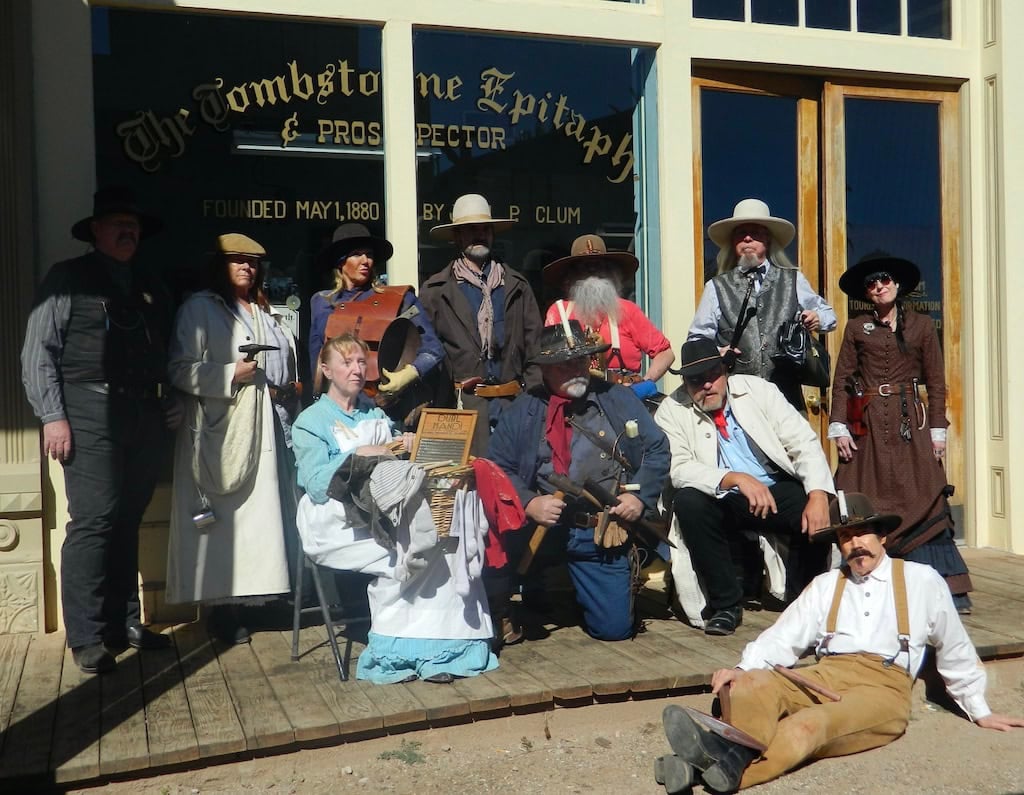
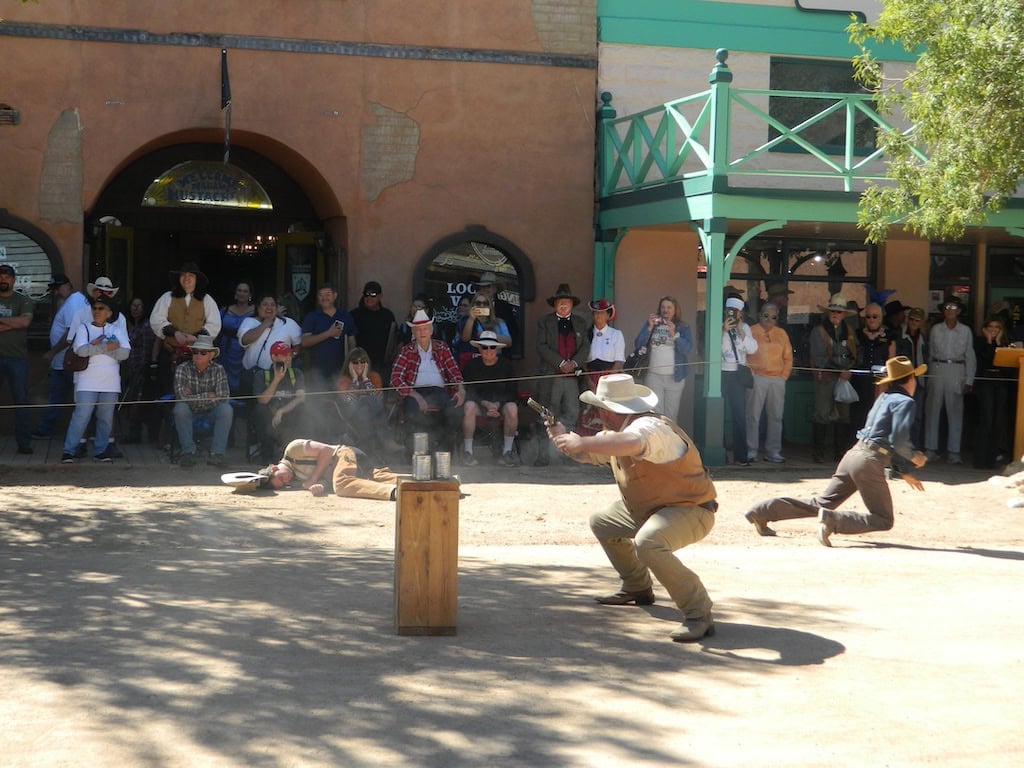
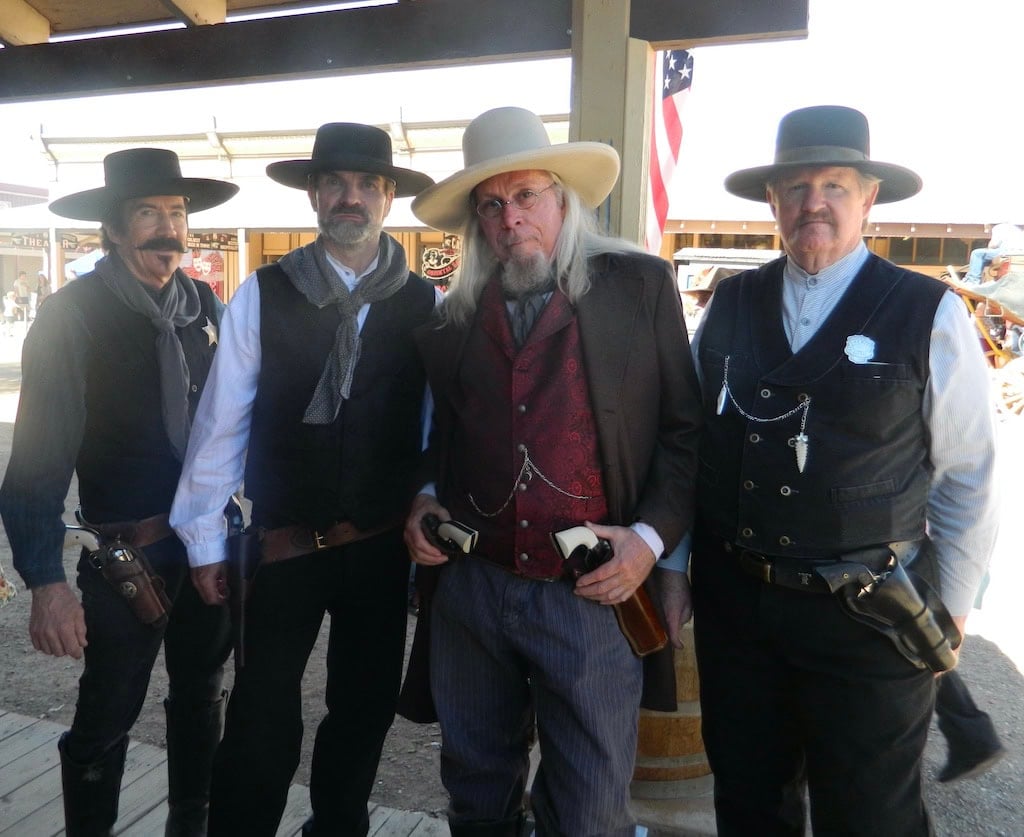

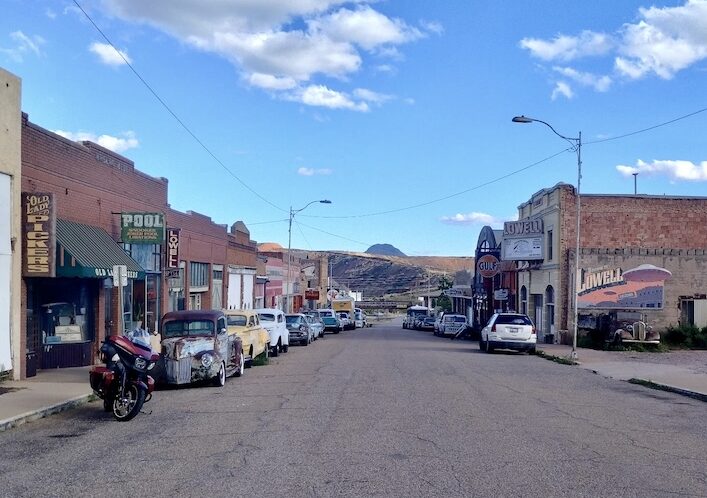
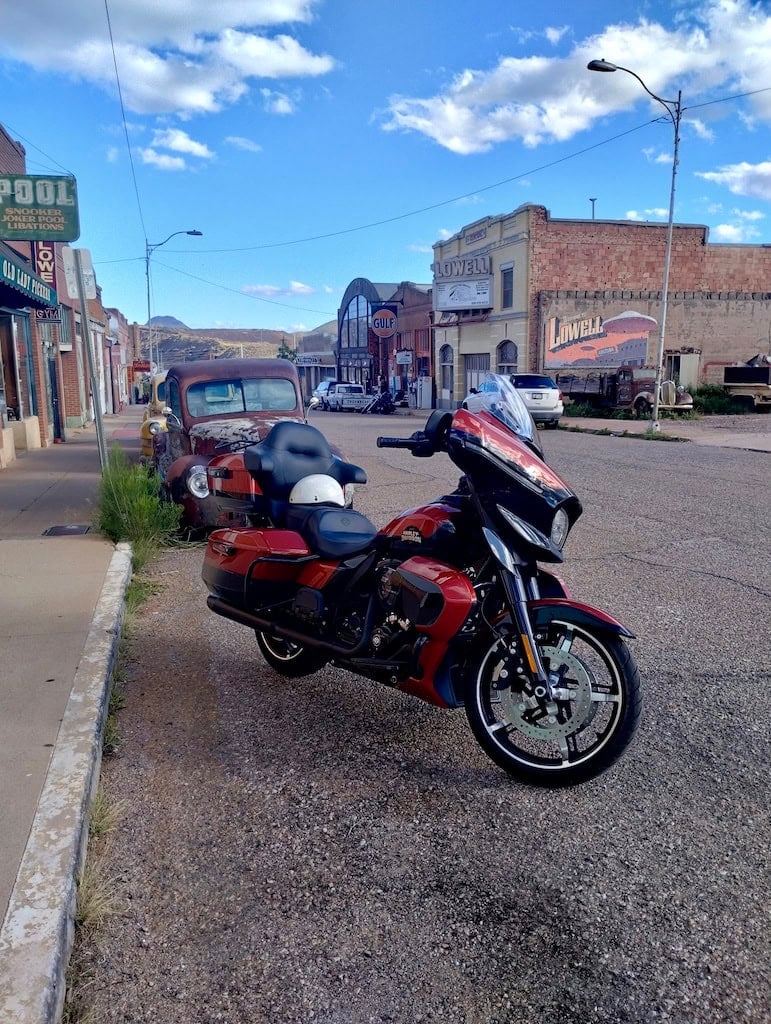
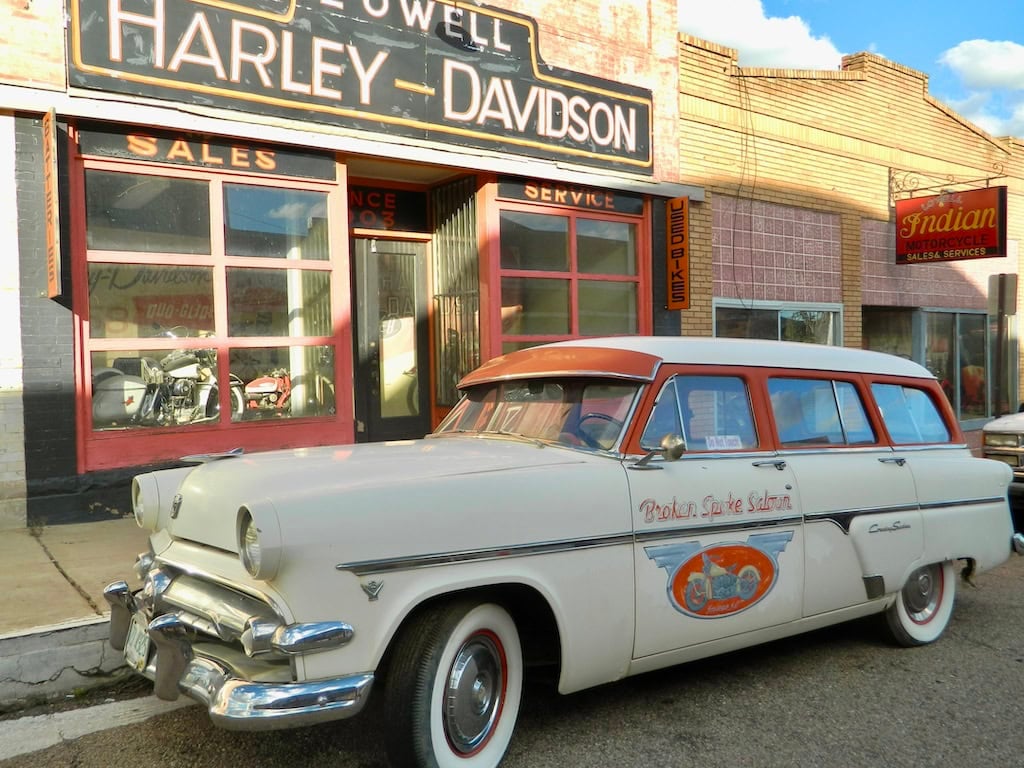
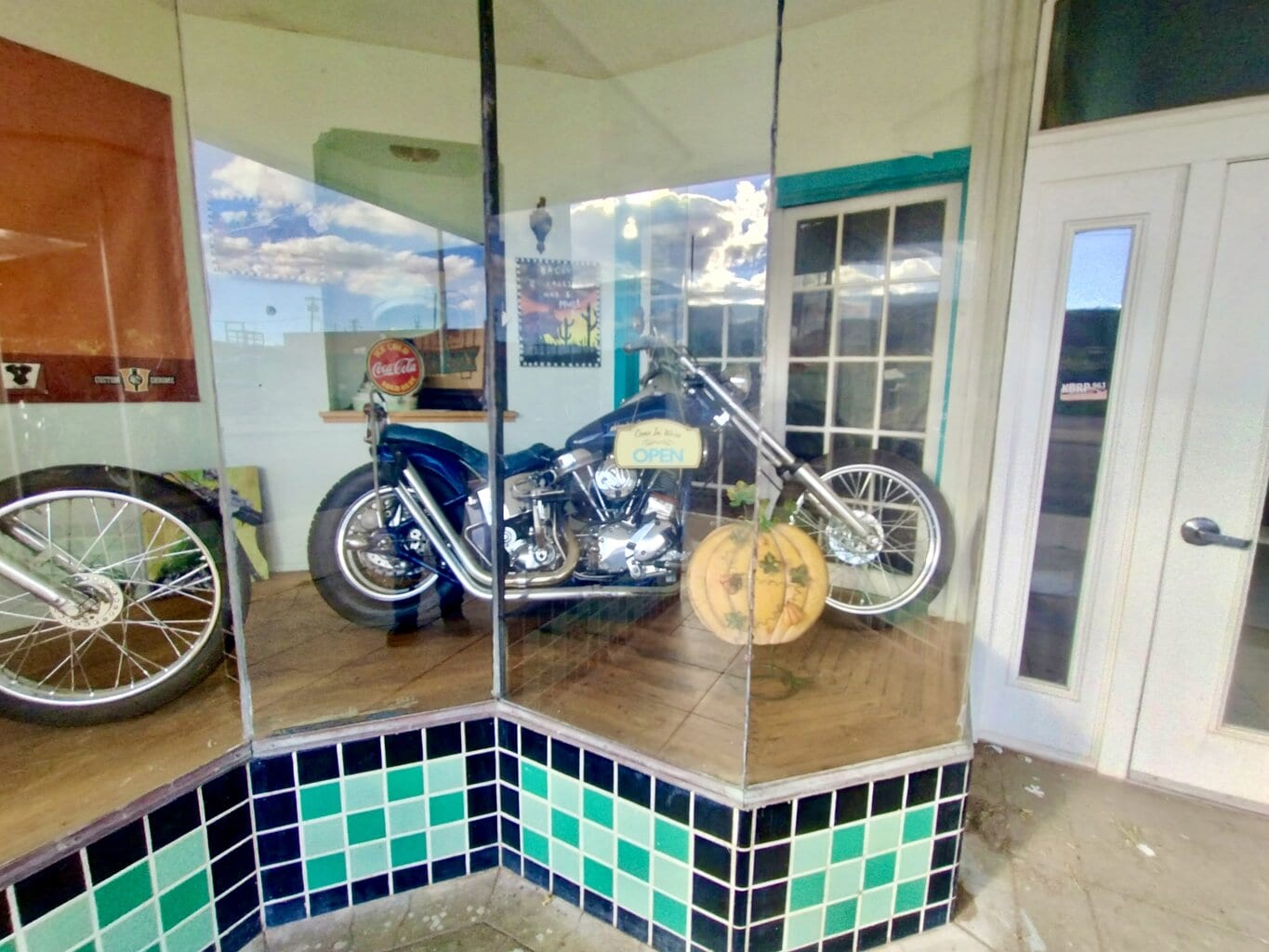





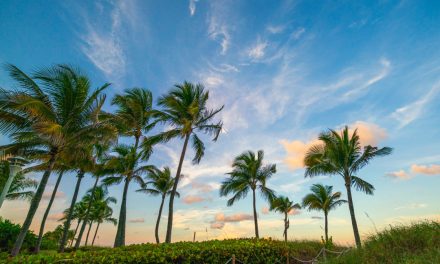




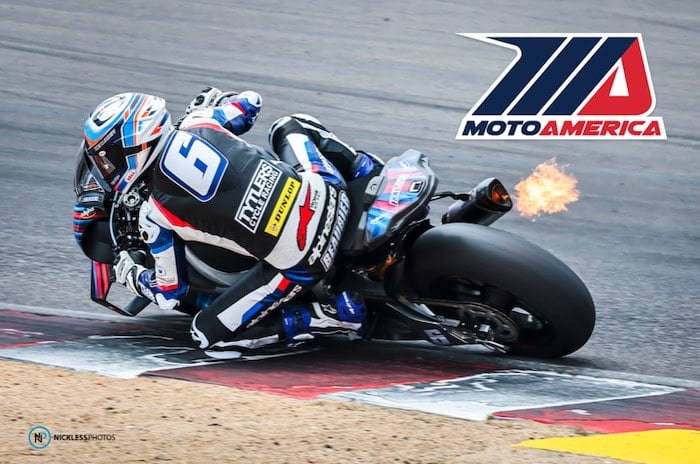



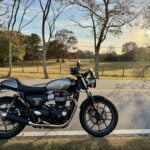
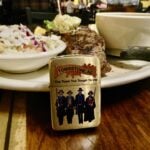

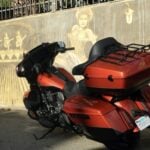


I’ve ridden through that part of the US half a dozen times but this article made me feel like I missed some important parts. I now need to go back.